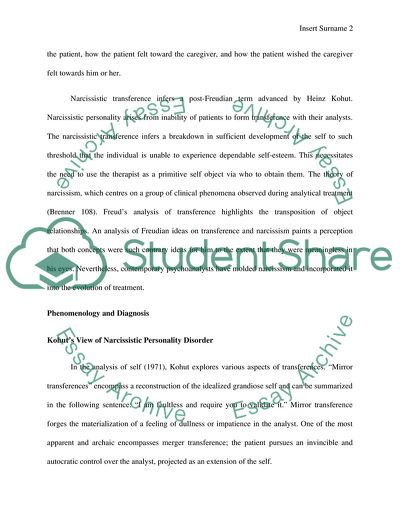Cite this document
(The Narcissistic Transference and The Psychoanalytic Treatment of Coursework, n.d.)
The Narcissistic Transference and The Psychoanalytic Treatment of Coursework. https://studentshare.org/psychology/1775742-the-narcissistic-transference-and-the-psychoanalytic-treatment-of-narcissistic-personality-disorders
The Narcissistic Transference and The Psychoanalytic Treatment of Coursework. https://studentshare.org/psychology/1775742-the-narcissistic-transference-and-the-psychoanalytic-treatment-of-narcissistic-personality-disorders
(The Narcissistic Transference and The Psychoanalytic Treatment of Coursework)
The Narcissistic Transference and The Psychoanalytic Treatment of Coursework. https://studentshare.org/psychology/1775742-the-narcissistic-transference-and-the-psychoanalytic-treatment-of-narcissistic-personality-disorders.
The Narcissistic Transference and The Psychoanalytic Treatment of Coursework. https://studentshare.org/psychology/1775742-the-narcissistic-transference-and-the-psychoanalytic-treatment-of-narcissistic-personality-disorders.
“The Narcissistic Transference and The Psychoanalytic Treatment of Coursework”. https://studentshare.org/psychology/1775742-the-narcissistic-transference-and-the-psychoanalytic-treatment-of-narcissistic-personality-disorders.


